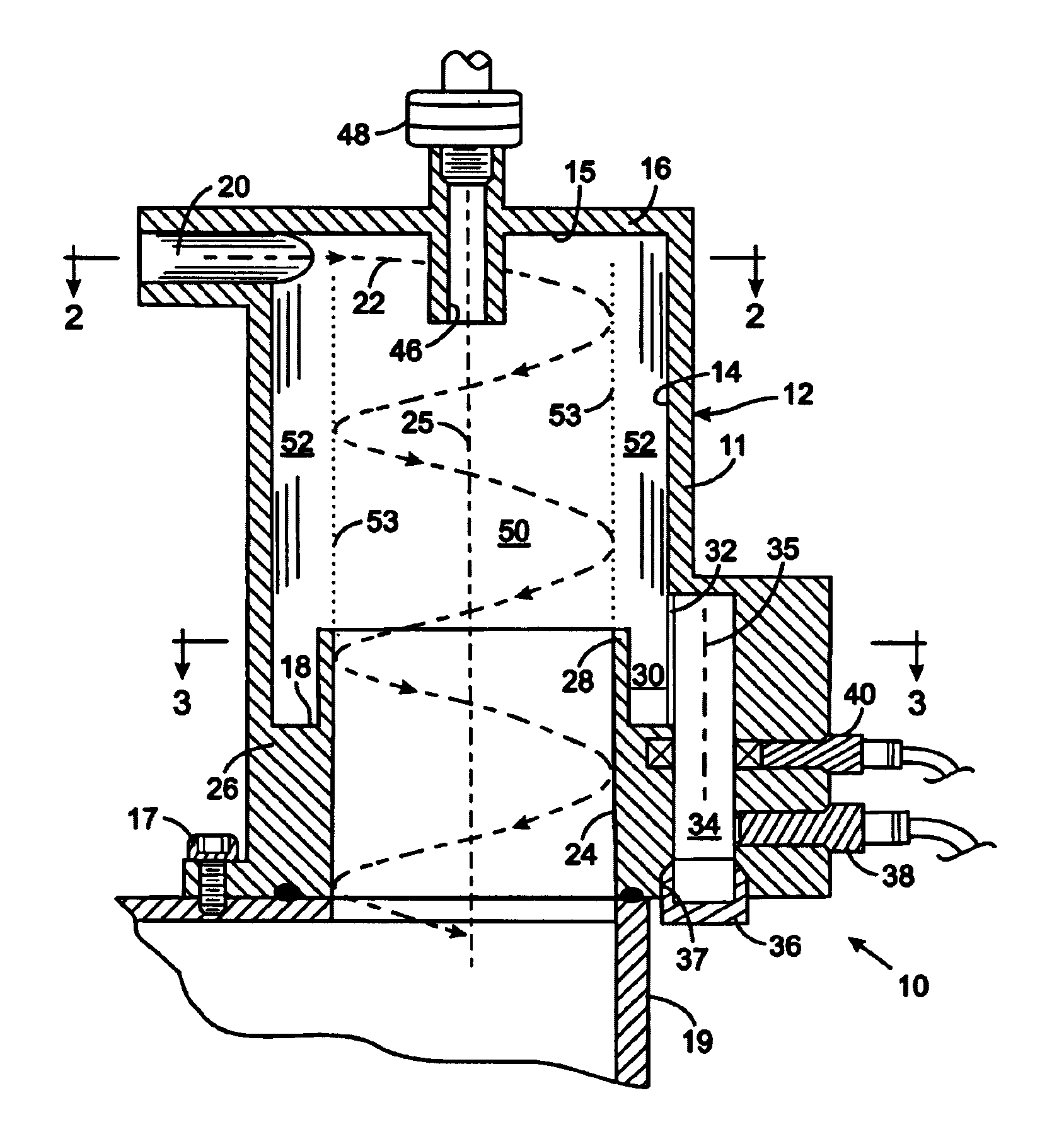Three-phase cyclonic fluid separator with a debris trap
a cyclonic fluid separator and debris trap technology, which is applied in the direction of liquid degasification, lubricant mounting/connection, separation processes, etc., can solve the problems of not being retained by the collector, and the small particles often did not possess sufficient momentum
- Summary
- Abstract
- Description
- Claims
- Application Information
AI Technical Summary
Benefits of technology
Problems solved by technology
Method used
Image
Examples
Embodiment Construction
[0022]With initial reference to FIG. 2, a three-phase separator 10 is provided to separate liquid, gas and solid components from a mixture. Although the separator 10 has particular utility in an engine lubrication system, it should be appreciated that the separator can be employed in other types of fluid systems. The separator 10 comprises a housing 12 with a tubular, cylindrical side wall 11 extending between a first end wall 16 and a second end wall 26, thereby forming a circular cylindrical separation chamber 14 with a first, or top, end 15 and a second, or bottom, end 18. The housing 12 abuts a lubricant reservoir 19 of the lubrication system and is attached thereto by plurality of machine screws 17 or other fastening mechanism.
[0023]With additional reference to FIG. 3, an inlet 20 opens into the separation chamber 14 adjacent the first end wall 16 and is aligned tangentially with curved surface of the cylindrical separation chamber 14. As will be described, a mixture of materia...
PUM
| Property | Measurement | Unit |
|---|---|---|
| tangential velocity | aaaaa | aaaaa |
| radial velocity | aaaaa | aaaaa |
| magnetic probe | aaaaa | aaaaa |
Abstract
Description
Claims
Application Information
 Login to View More
Login to View More - R&D
- Intellectual Property
- Life Sciences
- Materials
- Tech Scout
- Unparalleled Data Quality
- Higher Quality Content
- 60% Fewer Hallucinations
Browse by: Latest US Patents, China's latest patents, Technical Efficacy Thesaurus, Application Domain, Technology Topic, Popular Technical Reports.
© 2025 PatSnap. All rights reserved.Legal|Privacy policy|Modern Slavery Act Transparency Statement|Sitemap|About US| Contact US: help@patsnap.com



